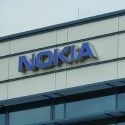Nokia Set for Recovery With 5G Update – Sources
Finnish equipment vendor may be heading for a strong second half and a big improvement in its market share as 5G software issues are resolved.

Nokia is due to release a new software platform and take advantage of 5G standards progress to address some of the interoperability problems that have bedeviled the Finnish equipment maker over the first half of 2019, Light Reading has learned.
The software fix currently in the works should allow Nokia to book some of the €200 million ($228 million) in revenues it was unable to recognize earlier this year because 5G software was not considered to be standards-compatible, according to Michael Genovese, an equity analyst with MKM Partners, and one other reliable source with knowledge of the matter.
It comes as the 3GPP, the main 5G standards body, makes some final adjustments to its Release 15 (R15) specifications update, tackling interoperability problems that were blamed by Nokia for some of the weakness in its recent financial results.
This "late drop" to R15 is important, said Genovese in a research note, "because it's the first to define dual 4G and 5G connectivity for mobile equipment."
"R15 'late drop' should be a major step in making 5G 'backward compatible' with 4G," said Genovese. "It should also allow Nokia to recognize some of the 5G software revenues it has in its backlog, and allow it to confidently release 4G software updates, both of which are likely to be positive for margins."
The developments are unlikely to make a huge difference to earnings for the second quarter of the year, which Nokia is due to report on July 25, but should provide a spur to its business in the second half.
Nokia declined to comment on the reports, noting it is currently in the "quiet period" before its earnings release and will have something to say when its next set of results are published.
The company boasts 43 commercial 5G contracts and has named 23 of its customers. While that is one more than close rival Ericsson has named, Nokia has fewer "live" networks in operation and has yet to begin supporting any 5G services in the US market.
At the last reckoning, five operators were providing services over Nokia's equipment -- three in South Korea, one in Italy and one in the United Arab Emirates -- while nine telcos across six countries were using Ericsson to support commercial 5G offers.
Want to know more about 5G? Check out our dedicated 5G content channel here on
Light Reading.
The disparity suggests Ericsson has not run into the same interoperability problems and the Swedish company appears to have grabbed a bigger share of the equipment market for radio access networks (RAN) in the first quarter.
Yet Barry French, Nokia's chief marketing officer, previously said his company had simply been more upfront than other vendors about 5G problems. "Every vendor has issues; we just had the courage to say it," he said in comments published on Light Reading's website in response to earlier coverage. "We have seen that others face some challenges -- like all data uplink taking place over the 4G network, not on the also-present 5G."
According to Genovese, analyst estimates show that Samsung claimed the number one spot over that period, thanks to early deployments in South Korea, while China's Huawei and Ericsson took the second and third places respectively, with each responsible for a "high single digit" share of the market.
That means both companies were a long way ahead of Nokia, which had about 8% of the RAN market in the first three months of this year, according to estimates. Genovese blames this on "timing" issues and says he expects the Finnish vendor's 5G share to "significantly improve later this year driven by contract wins."
His assessment tallies with that of another source, who previously told Light Reading that Ericsson had better timed its software upgrades to match telcos' recent spending cycle.
Related posts:
— Iain Morris, International Editor, Light Reading
About the Author(s)
You May Also Like












